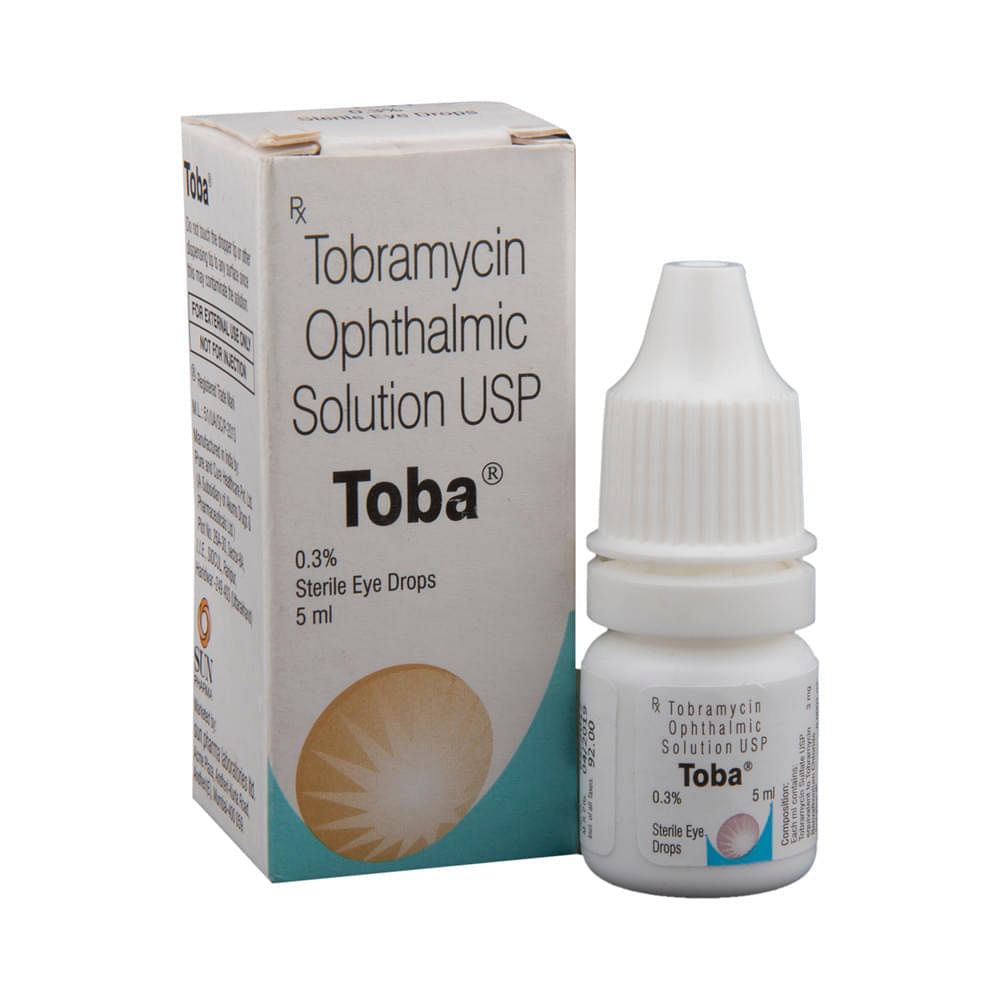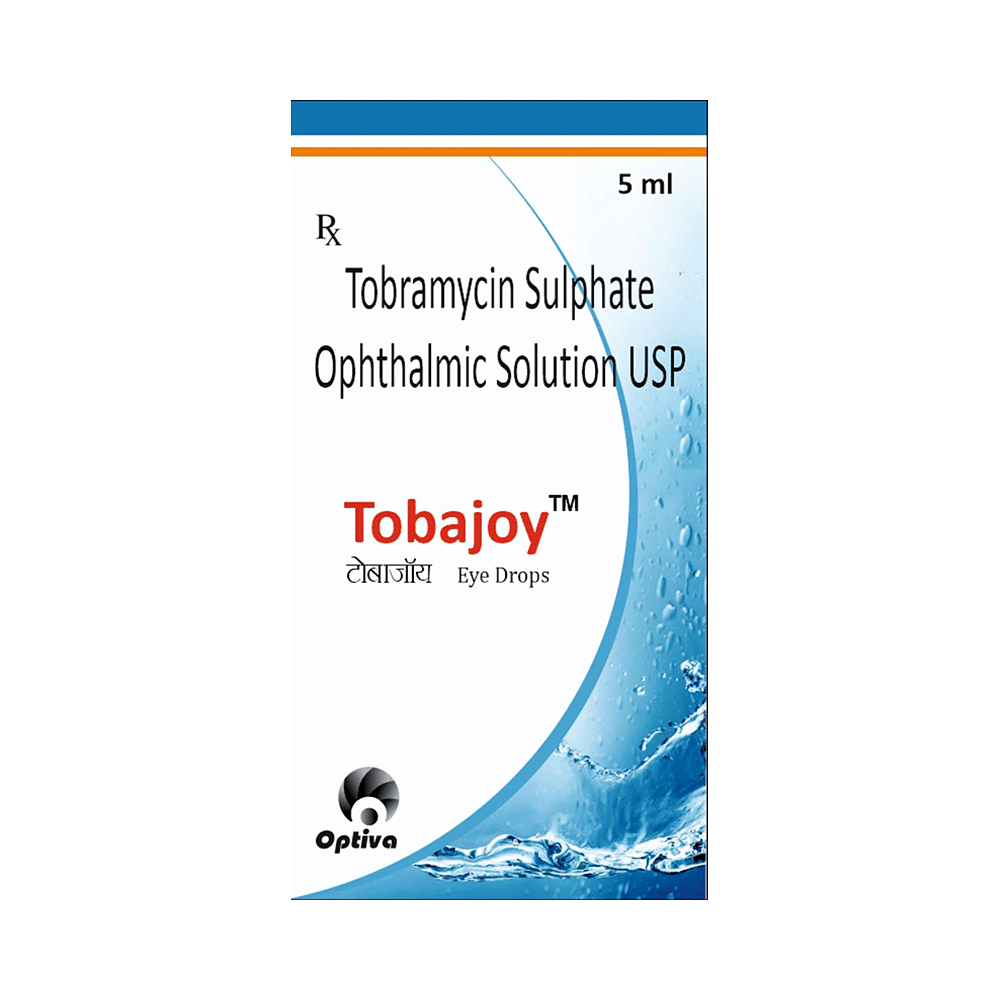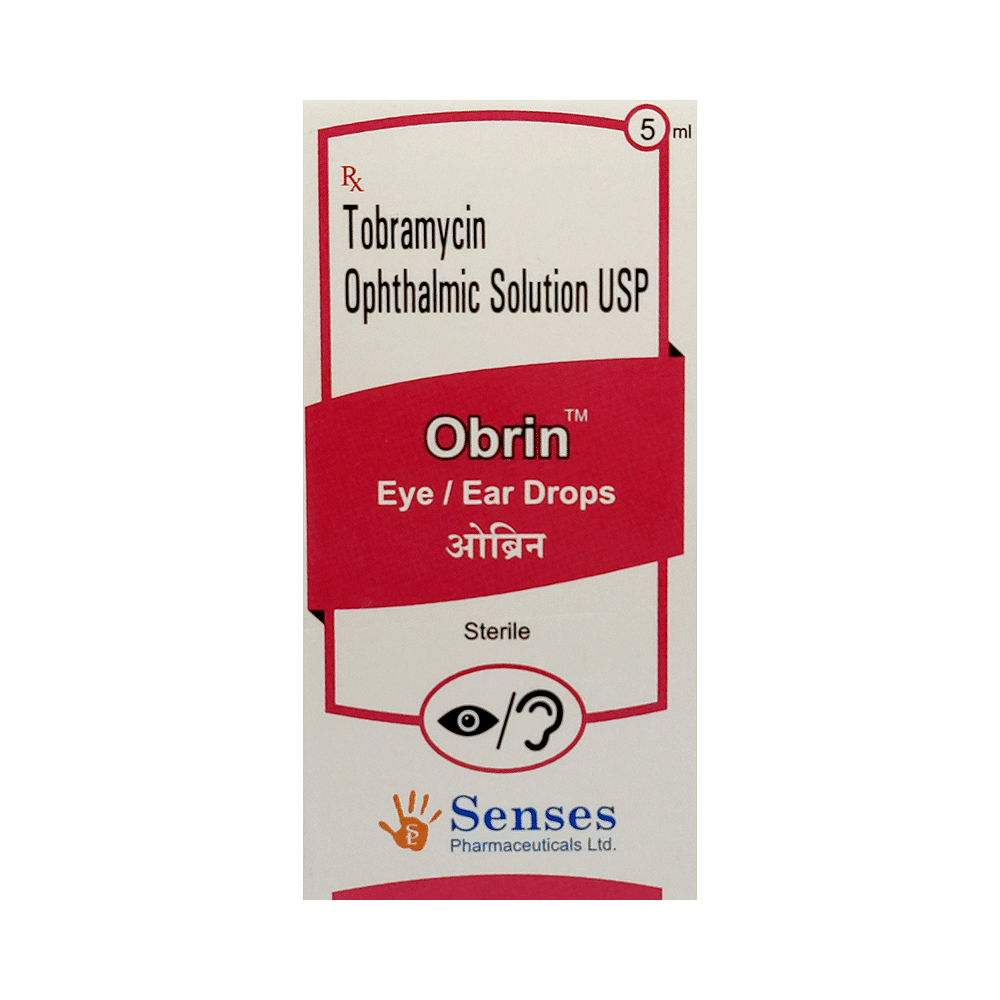
Tobdiv Eye Drop
Manufacturer
Mediva Lifecare
Salt Composition
Tobramycin (0.3% w/v)
Key Information
Short Description
Tobdiv Eye Drop is an antibiotic medicine used to treat bacterial infections of the eye and eyelids.
Dosage Form
Ophthalmic Solution
Introduction
Tobdiv Eye Drop is an antibiotic medicine that is used to treat bacterial infections of the eye (e.g., conjunctivitis) and the eyelids (e.g., blepharitis). It may also help to prevent an infection after an eye injury or surgery.
Directions for Use
This medicine is for external use only. Take it in the dose and duration as advised by your doctor. Check the label for directions before use. Hold the dropper close to the eye without touching it. Gently squeeze the dropper and place the medicine inside the lower eyelid. Wipe off extra liquid.
How it works
Tobdiv Eye Drop is an antibiotic. It stops bacterial growth in the eye by preventing synthesis of essential proteins required by bacteria to carry out vital functions. This treats your eye infection.
Quick Tips
Your doctor has prescribed Tobdiv Eye Drop to treat bacterial infections of the eye. Do not skip any doses and finish the full course of treatment even if you feel better. Tobdiv Eye Drop may cause damage to cornea on long-term use. Apply pressure on the corner of the eye (close to the nose) for about 1 minute immediately after instilling the drop. Wait for at least 5-10 minutes before delivering the next medication in the same eye to avoid dilution. Stinging sensation may occur for 1-2 mins. Notify your doctor if it persists for longer. Tobdiv Eye Drop may cause damage to cornea on long-term use. Make sure to use it within 4 weeks of opening the bottle.
Related Medicines

Toba Eye Drop

Ufitob Eye Drop

Vetob Eye/Ear Drop

Tobess Eye Drop

Tobajoy Eye Drop

Tobabert Eye Drop

Obrin Eye Drop

Tobraeye Ophthalmic Solution

Tocin Eye Drop

Eyebrex 0.3% Liquifilm
Frequently asked questions
What types of bacteria can Tobdiv Eye Drop effectively kill?
Tobdiv Eye Drop is effective against a wide range of bacteria, including S. Aureus and S. epidermidis, some species of Streptococci, Pseudomonas aeruginosa, Escherichia coli, Klebsiella pneumoniae, Enterobacter aerogenes, Proteus mirabilis, Morganella morganii, most Proteus vulgaris strains, Haemophilus influenza, H. aegyptius, Moraxella lacunata, Acinetobacter calcoaceticus, and some Neisseria species. However, it is essential to consult your doctor to determine if this medicine is suitable for your specific condition.
How long should I use Tobdiv Eye Drop?
The duration of treatment will be determined by your doctor, depending on the severity of your infection. For mild to moderate eye infections, your doctor may recommend using 1-2 eye drops, 4 times a day. In severe infections, you may be prescribed 2 drops every hour. It is crucial to use Tobdiv Eye Drop exactly as prescribed by your doctor and not to use more or less of it than recommended.
How should I use Tobdiv Eye Drop?
To use Tobdiv Eye Drop, wash your hands thoroughly before application. Avoid touching the dropper tip to your eye or any other surface. Tilt your head slightly and instill one drop. Close your eyes for 2-3 minutes with your head tipped down, avoiding blinking or squinting. Gently press your finger to the inside corner of your eye for about 1 minute to prevent the liquid from draining into your tear duct. If you need to use multiple drops, wait about 5 minutes between applications. Wait at least 10 minutes before using any other eye drops prescribed by your doctor.
What if I don't feel better after using Tobdiv Eye Drop?
If you do not experience improvement in your symptoms after completing the full course of treatment, or if your symptoms worsen while using Tobdiv Eye Drop, inform your doctor immediately.
Can I stop using Tobdiv Eye Drop when I feel better?
No, it is essential to complete the full course of treatment as prescribed by your doctor, even if you are feeling better. Your symptoms may improve before the infection is fully cured. Stopping treatment prematurely may lead to incomplete treatment and potentially worsening the infection.


